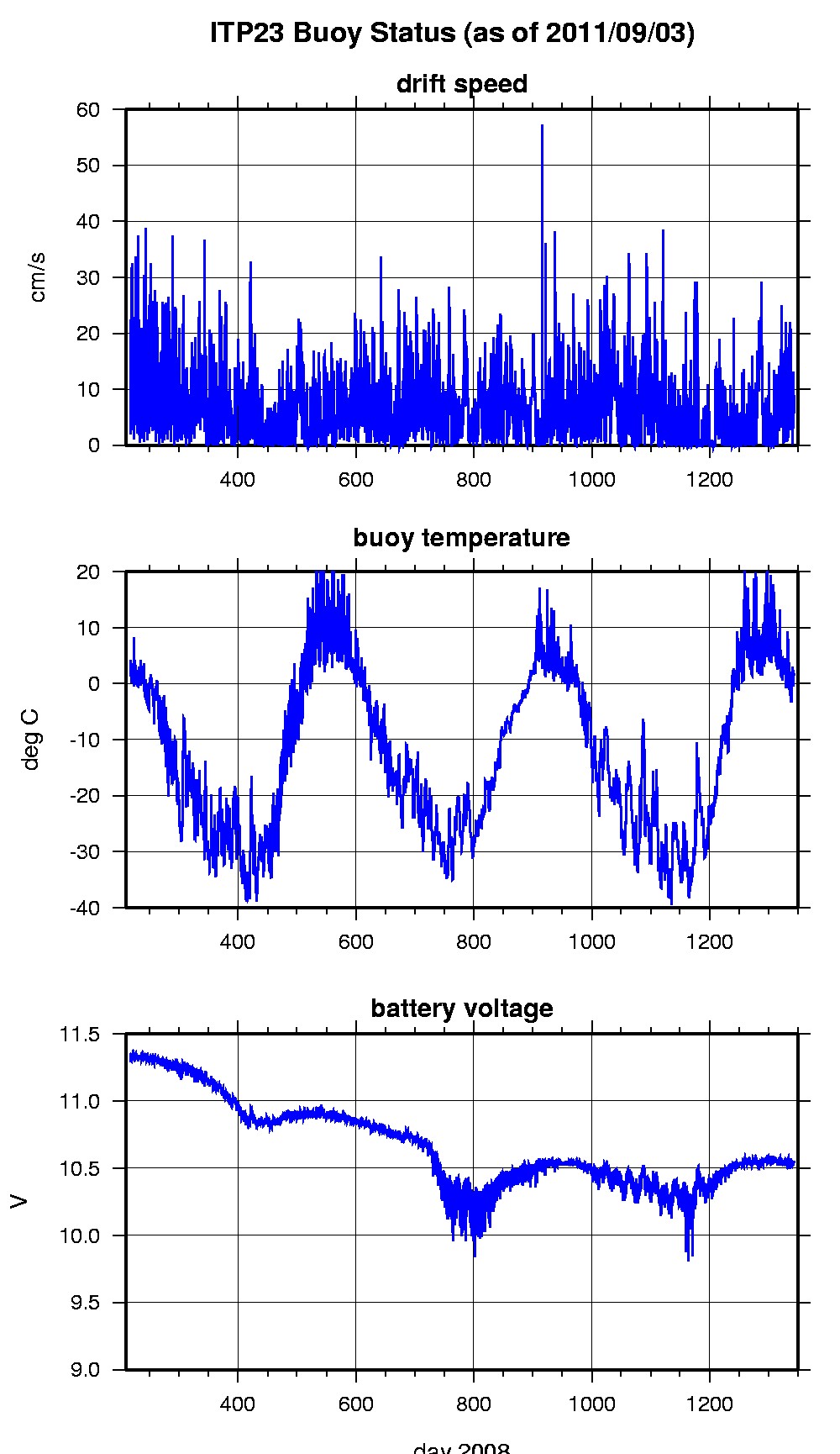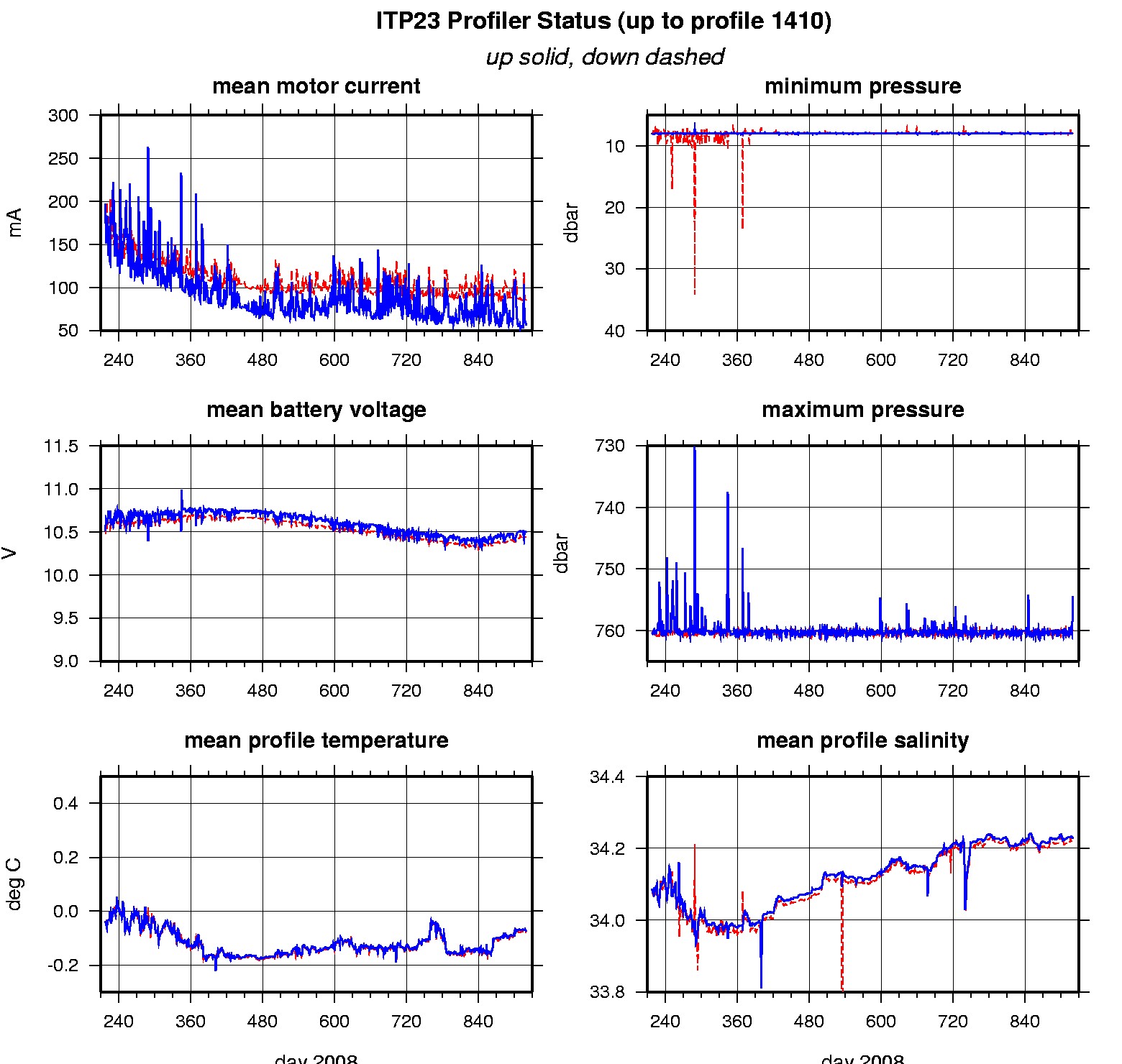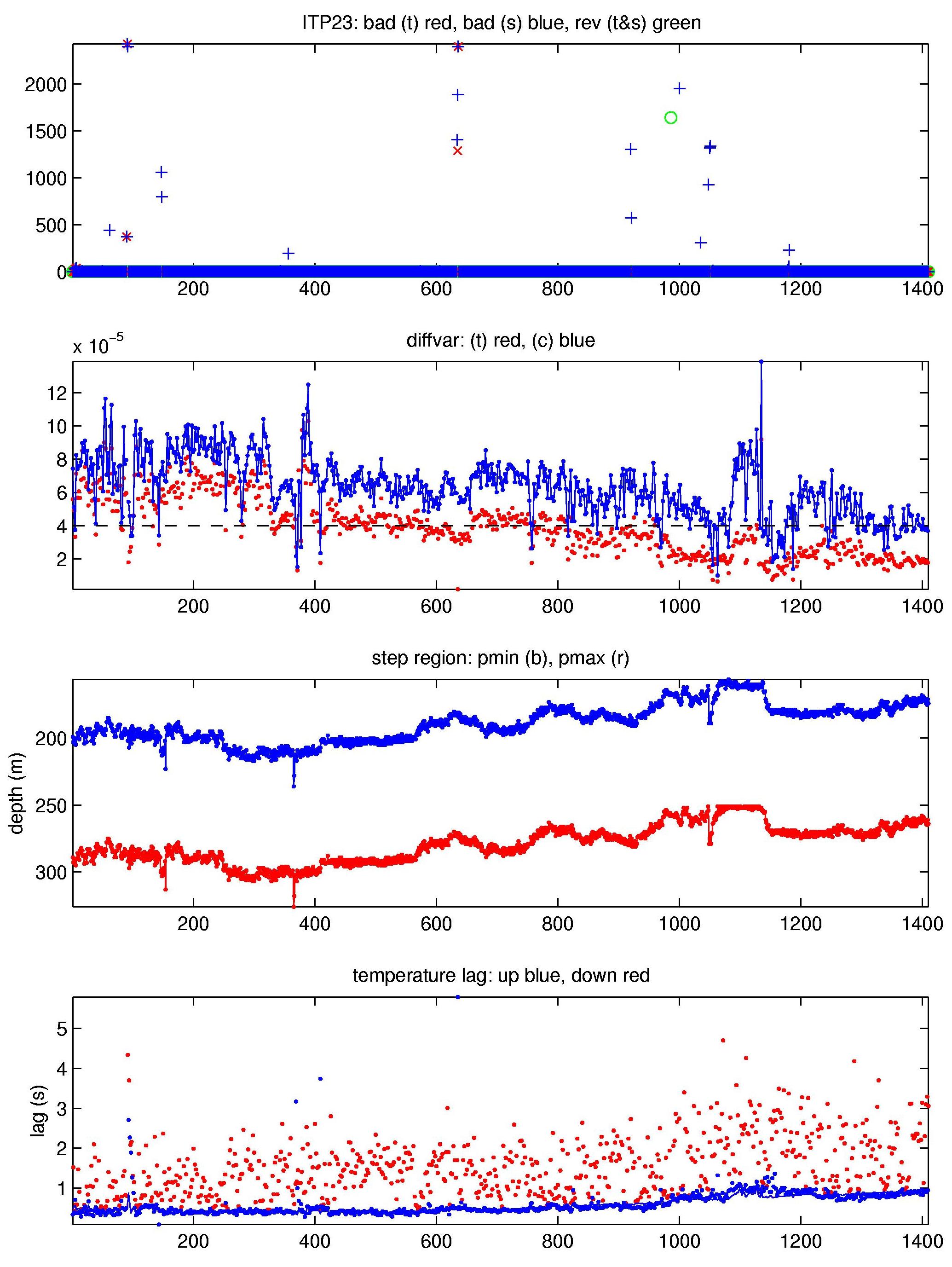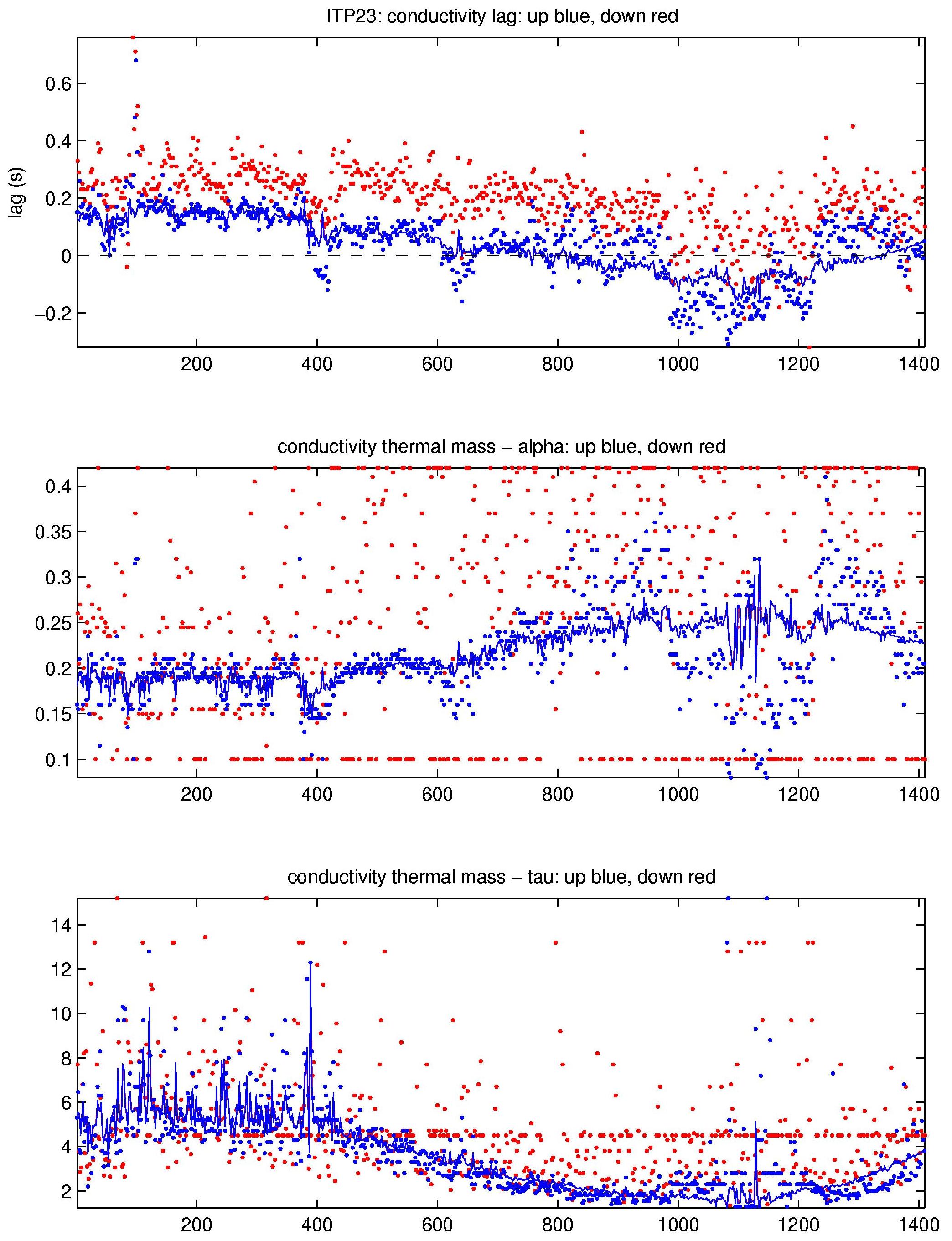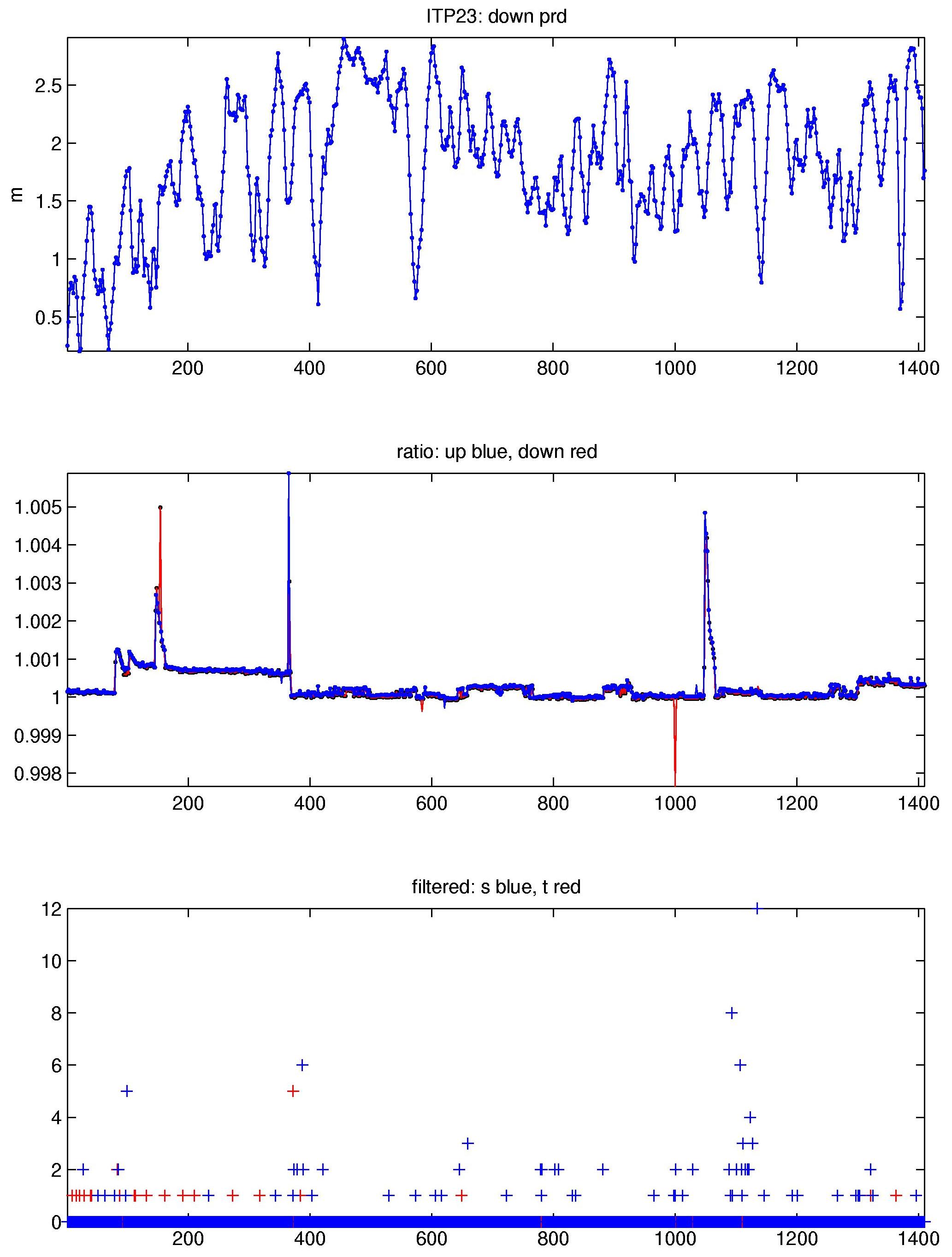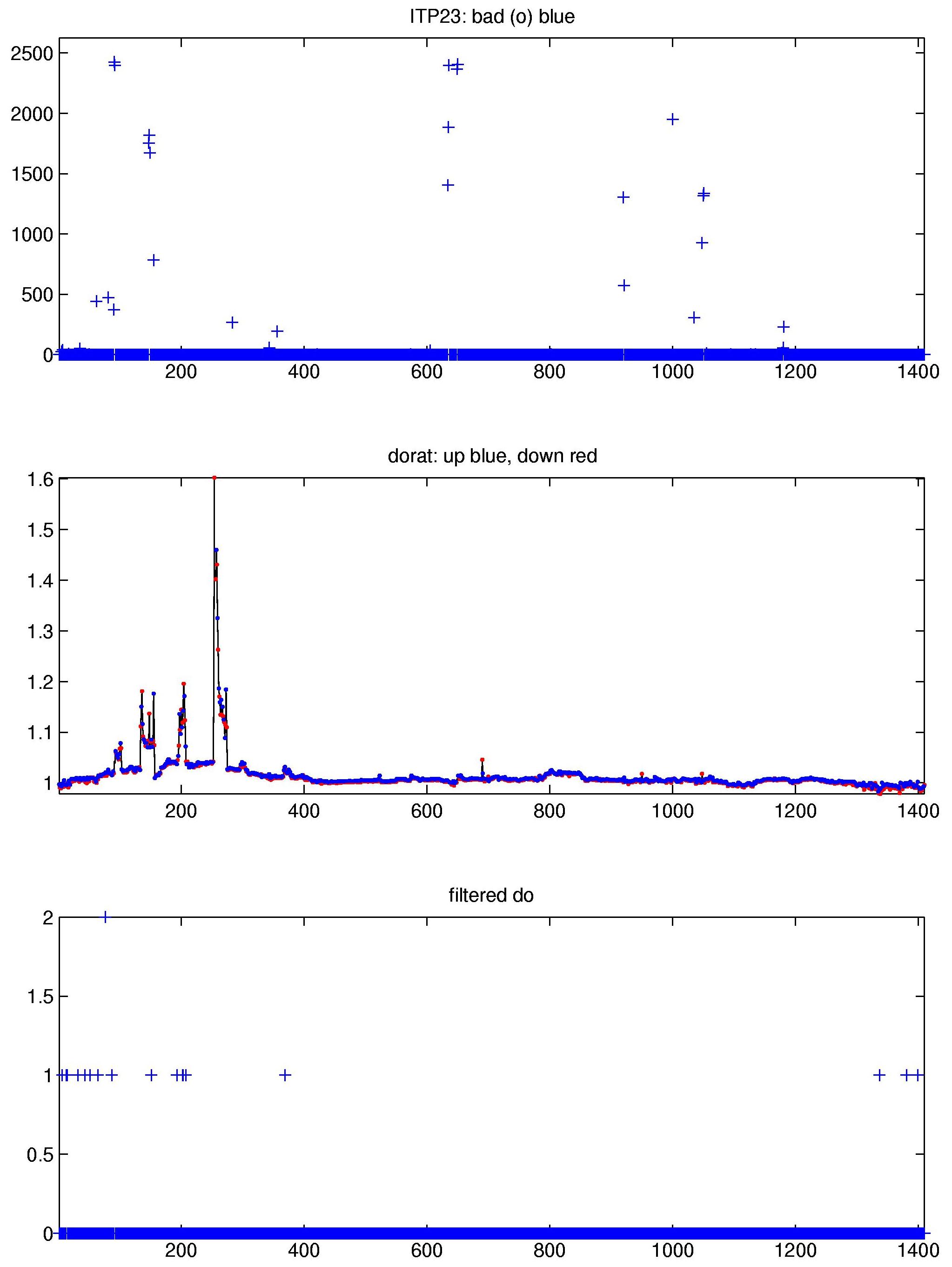ITP23 Data Processing
The 1410 profiles that were recovered from the ITP were processed according to the procedures described in the ITP Updated Data Processing Procedures. The processing parameters for ITP 23 are shown in the figures to the right. Buoy drift speeds were almost always less than 30 cm/s throughout the entire time series so the profiler covered the full extent of every profile, except 3 where profiler reset occurred. The CTD and dissolved oxygen data were largely free of icing and biofouling, providing 92% good data return over nearly 2 year long period.
Thermohaline staircases were present throughout the time series, enabling CTD lag corrections. All of the lags were in the typical range as previous systems for the first 400+ profiles then gradually shifted away from norm concurrent with deepening of the step region in the water column. Potential conductivity exhibits some small scale shifts and several spikes over the period, with good agreement between the up and down profiles attesting to the absence of fouling. Similar correction to the dissolved oxygen sensor exhibit some modest shifts and creep during the first 400 profiles, but flattens out for the remainder of the data set.
See the Data Products tab to the left for descriptions of the three levels (I, II, III) of data processing and to access all data.
